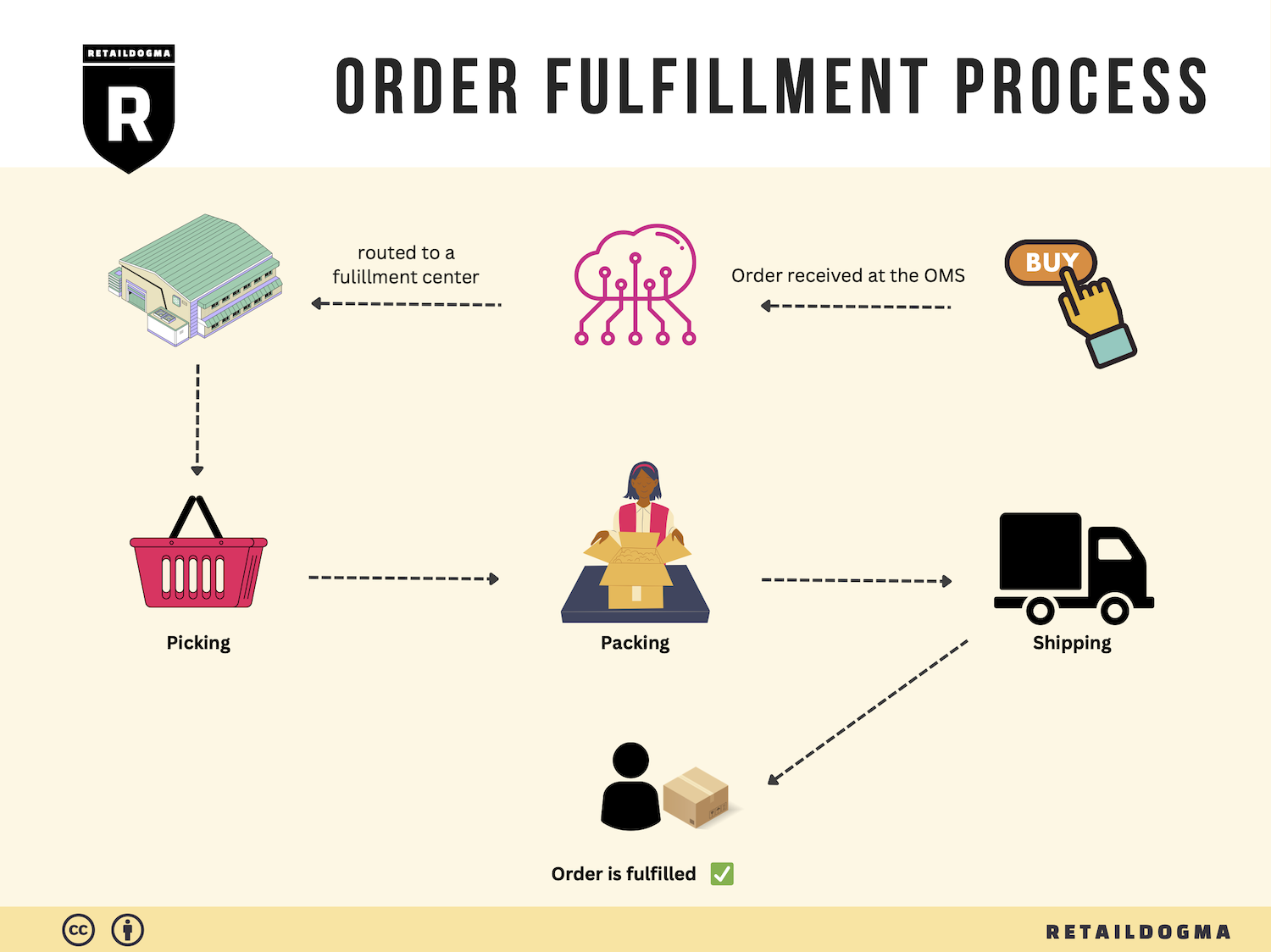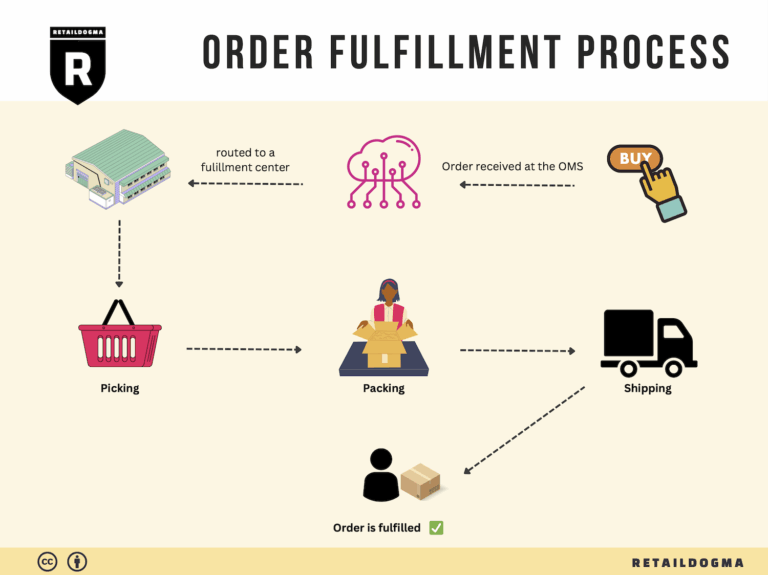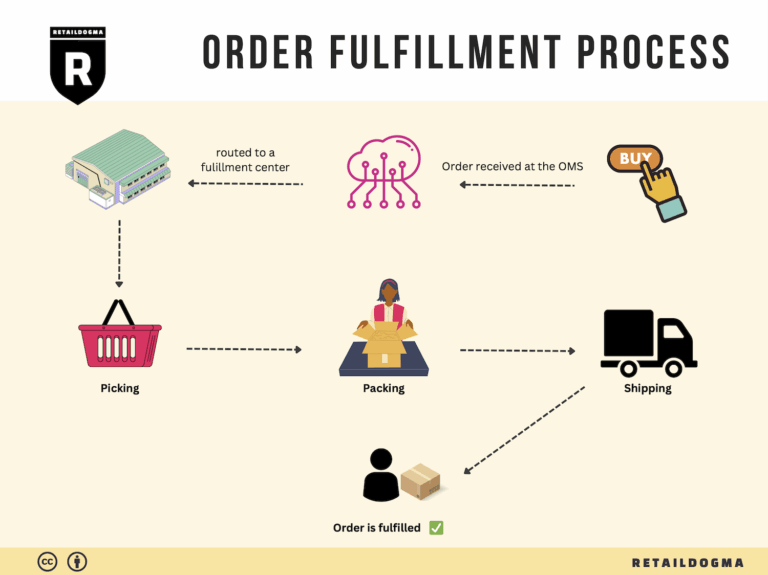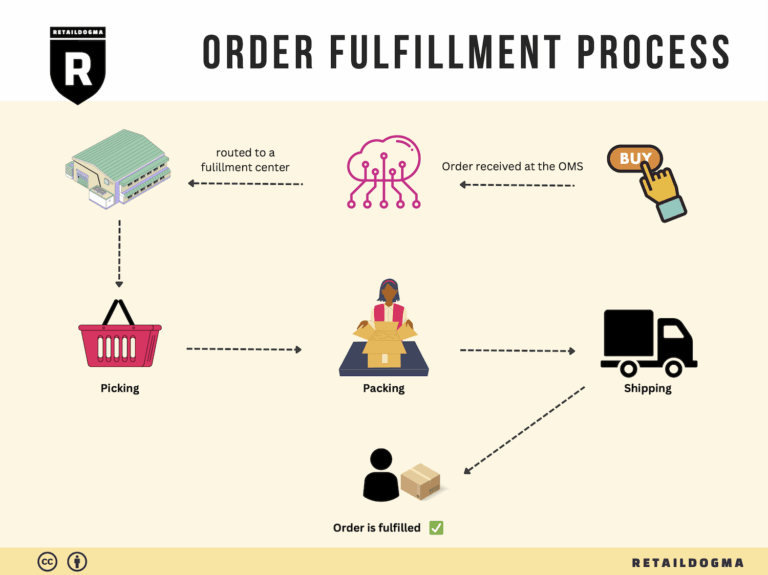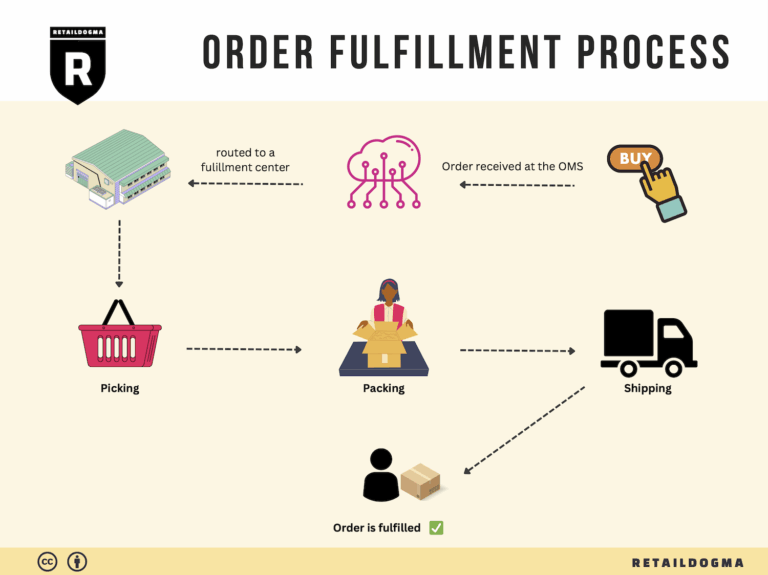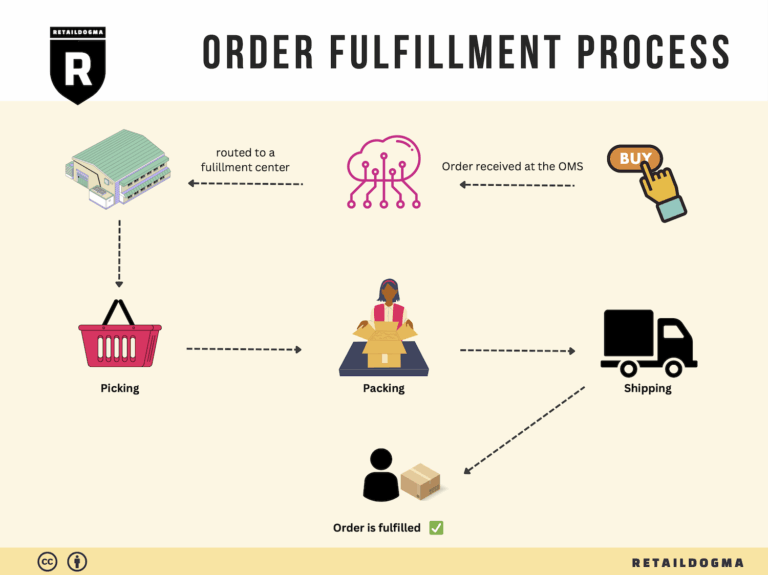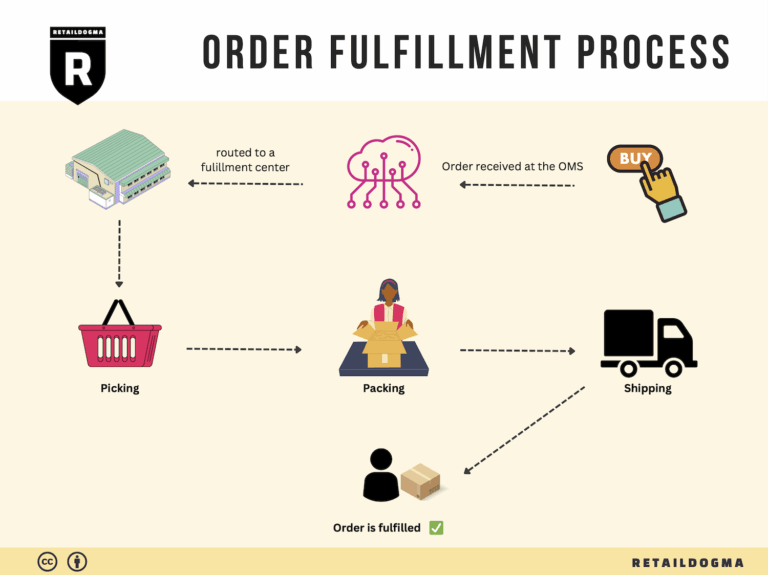What Is A Fulfillment Center? A Complete Guide (2025)
What is E-commerce Fulfillment? An Introduction for Growing Businesses
Understanding the Fulfillment Process
As an e-commerce business owner, the thrill of growing sales can quickly turn into a daunting challenge when it comes to packing and shipping orders. Many entrepreneurs find themselves overwhelmed by the logistics of fulfilling orders efficiently while trying to maintain a high level of customer satisfaction. This is where e-commerce fulfillment comes into play. At its core, fulfillment is the process of getting a product from your warehouse to the customer’s doorstep—an essential function that can significantly impact your business’s success.
In this guide, we will explore various aspects of e-commerce fulfillment that are crucial for scaling your business. First, we will delve into the different fulfillment models available, such as Third-Party Logistics (3PL) and Fulfillment by Amazon (FBA). Each model has its own set of advantages and challenges, and understanding these can help you choose the best fit for your business needs.
Next, we will examine the core services that a typical fulfillment partner provides. These services include picking and packing, inventory management, shipping logistics, and return processing. Each component plays a vital role in ensuring that your customers receive their orders accurately and on time, thus enhancing their overall shopping experience.
Choosing the right fulfillment partner is a critical decision that can either propel your business forward or hinder its growth. In this guide, we will provide practical tips on how to evaluate potential partners based on factors such as scalability, technology integration, customer service, and pricing structures. Understanding these elements will help you make an informed choice that aligns with your business goals.
Finally, we will discuss pricing strategies associated with fulfillment services. Transparency in pricing is essential, as hidden fees can quickly erode your profit margins. We’ll help you navigate the various costs involved and how to budget for them effectively.
The goal of this guide is to empower you—business owners, operations managers, and entrepreneurs—to make informed and strategic decisions about your logistics. By understanding the fundamentals of e-commerce fulfillment, you can streamline your operations, reduce stress, and focus on what you do best: growing your business.
What You’ll Learn In This Guide
- What is E-commerce Fulfillment? An Introduction for Growing Businesses
- The Order Fulfillment Process: From ‘Buy’ Button to Customer’s Door
- Comparing Fulfillment Models: In-House vs. 3PL vs. Dropshipping
- A Deep Dive into Amazon FBA: Pros, Cons, and Who It’s For
- Core Services Offered by Fulfillment Centers
- How to Choose a Fulfillment Partner: A 6-Point Checklist
- Understanding Fulfillment Pricing: A Breakdown of Common Fees
- Frequently Asked Questions (FAQs) about Fulfillment
- Conclusion: Is Outsourcing Fulfillment the Right Move for Your Business?
- Important Disclaimer
The Order Fulfillment Process: From ‘Buy’ Button to Customer’s Door
1. Receiving Inventory
The order fulfillment process begins with receiving inventory. When products are delivered to your fulfillment center, they must be checked against purchase orders to ensure accuracy. This step is crucial to verify that the correct quantities and types of products have been received. Key terms associated with this phase include SKU (Stock Keeping Unit), which uniquely identifies each product variant.
Accurate inventory receiving helps minimize discrepancies and ensures that your stock levels are correctly recorded in your inventory management system. This is essential for maintaining a smooth operation, as any errors at this stage can lead to stockouts or overstock situations, affecting customer satisfaction and cash flow.
2. Warehouse Storage
Once inventory is received and verified, it moves to warehouse storage. This step involves strategically placing products in designated storage areas within the fulfillment center. Effective warehouse management is vital, as it directly impacts order picking efficiency. Products are typically organized based on their SKU, popularity, and size, which facilitates easy access and retrieval.
Proper storage solutions can include shelving, bins, and pallets, which help optimize space and ensure that items are stored safely. Key performance indicators (KPIs) such as inventory turnover and space utilization are monitored during this phase. An organized storage system reduces the time spent locating products, thus speeding up the overall fulfillment process.
3. Order Picking
The next step is order picking, where items are selected from storage based on customer orders. This process is usually guided by a pick list, which details the products that need to be gathered for each order. Efficient picking is crucial, as it directly affects fulfillment speed and accuracy.
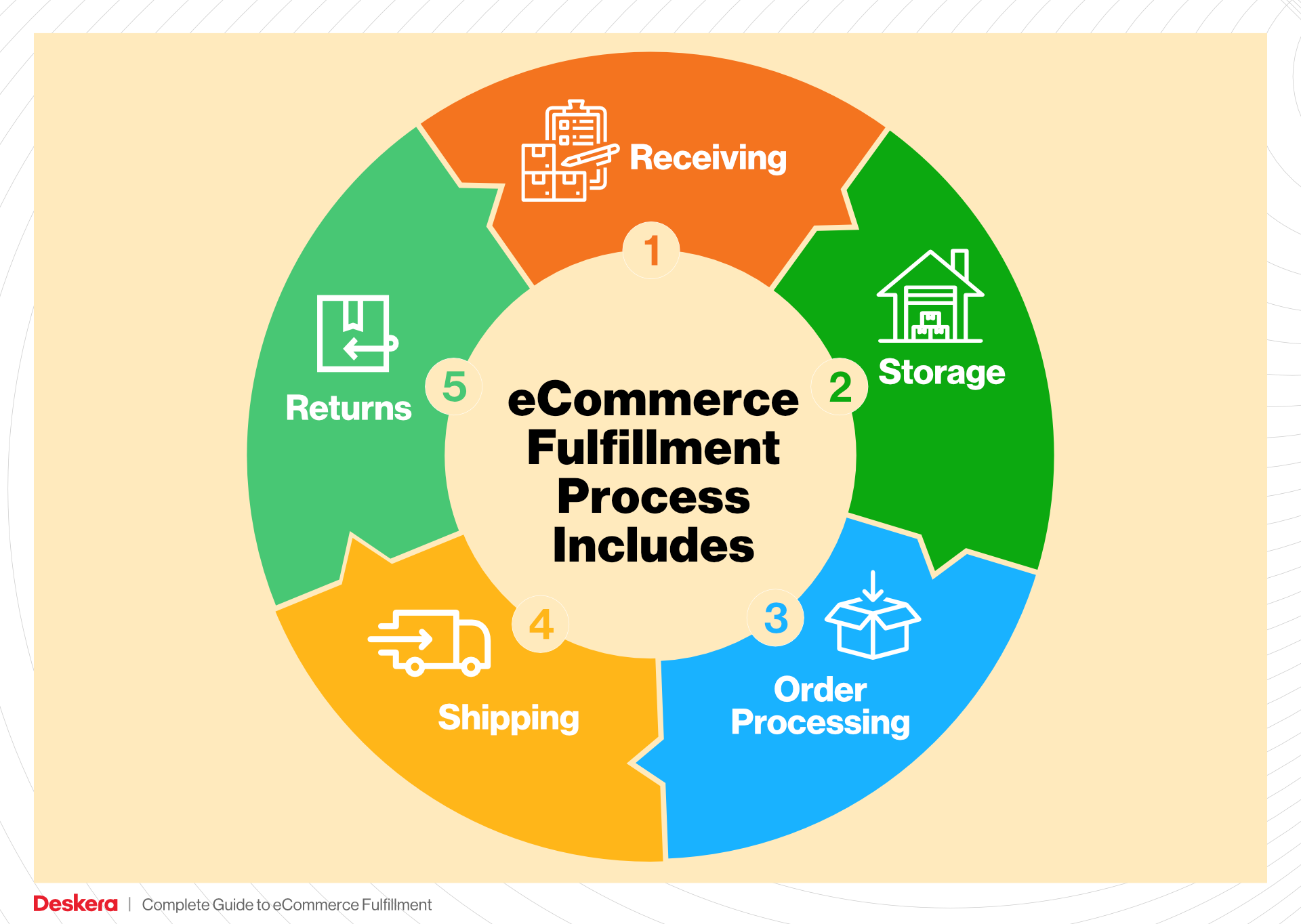
There are various picking methods, such as single order picking, batch picking, and zone picking. Each method has its advantages depending on the volume and type of orders being processed. For instance, batch picking can streamline the process for multiple orders by picking items for several orders simultaneously. Monitoring metrics like pick accuracy helps ensure that the right items are selected, reducing returns and enhancing customer satisfaction.
4. Order Packing
After picking, the next phase is order packing. This step involves carefully placing the selected items into shipping boxes or envelopes, ensuring they are secure and protected during transit. Packaging is not just about safety; it also reflects your brand identity. Using branded boxes or including personalized messages can enhance the unboxing experience, which is increasingly important in e-commerce.
Key considerations during packing include the use of appropriate packing materials to prevent damage, as well as compliance with shipping regulations. It’s essential to track packing efficiency to optimize labor costs and minimize waste. Implementing automated packing systems can also speed up this process and improve accuracy.
5. Shipping & Delivery
The final step in the order fulfillment process is shipping and delivery. Once packages are packed, they are labeled and sent out via a shipping carrier. Choosing the right carrier is critical for ensuring timely delivery and managing shipping costs. Many businesses partner with multiple carriers to provide options for different shipping speeds and destinations.
Key terms in this phase include tracking numbers, which allow customers to monitor their orders in real-time. This transparency is vital for customer satisfaction, as it helps manage expectations regarding delivery times. Additionally, effective returns management processes should be in place, as returns are an inevitable part of e-commerce. Monitoring shipping metrics, such as on-time delivery rates, helps assess carrier performance and identifies areas for improvement in your fulfillment strategy.
In summary, the order fulfillment process encompasses several critical steps, each playing a vital role in ensuring that products reach customers promptly and accurately. By understanding and optimizing each phase—from receiving inventory to shipping and delivery—e-commerce businesses can significantly enhance operational efficiency and customer satisfaction.
Comparing Fulfillment Models: In-House vs. 3PL vs. Dropshipping
Fulfillment Model Comparison Table
| Model | Who Handles Inventory | Best For (Business Stage) | Key Advantage | Key Disadvantage |
|---|---|---|---|---|
| In-House Fulfillment | The business itself | Established businesses with stable sales | Complete control over inventory and processes | High overhead costs and resource demands |
| Third-Party Logistics (3PL) | A third-party provider | Startups and scaling businesses | Scalable solutions with reduced operational burdens | Less control over inventory and operations |
| Dropshipping | Suppliers/Manufacturers | New and small businesses | Low upfront investment and minimal risk | Lower profit margins and dependency on suppliers |
In-House Fulfillment
In-house fulfillment refers to the process where a business manages its own inventory, warehousing, and shipping operations. This model is often favored by established businesses that have a steady flow of sales and sufficient resources to maintain an in-house logistics team. A key advantage of in-house fulfillment is the complete control it provides over inventory management, order processing, and shipping. Businesses can tailor their operations to meet specific customer needs, ensuring personalized service and brand consistency. However, the downside is that it requires significant investment in infrastructure, staff, and technology, leading to higher overhead costs. Additionally, as businesses scale, the complexity of managing logistics can become a burden, requiring more resources and potentially diverting focus from core business activities.
Third-Party Logistics (3PL)
Third-party logistics (3PL) providers offer a flexible solution for businesses looking to outsource their fulfillment operations. With this model, a third-party company takes on the responsibilities of warehousing, inventory management, and shipping on behalf of the business. This is particularly advantageous for startups and growing companies that may not yet have the capacity or desire to manage logistics in-house. A key benefit of 3PL is scalability; businesses can adjust their logistics operations as they grow without the burden of managing additional staff or infrastructure. Additionally, 3PL providers often have established relationships with shipping carriers, which can lead to lower shipping costs and faster delivery times. On the flip side, businesses may experience a loss of control over their inventory and fulfillment processes, which can lead to discrepancies in service levels or inventory accuracy. Choosing the right 3PL partner is critical, as the quality of service can vary significantly across providers.
Dropshipping
Dropshipping is a fulfillment model where the retailer does not keep products in stock. Instead, when a customer places an order, the retailer purchases the item from a third-party supplier, who then ships the product directly to the customer. This model is particularly appealing to new and small businesses due to its low barrier to entry. Since there are no upfront inventory costs, entrepreneurs can start their e-commerce businesses with minimal financial risk. Additionally, dropshipping allows for a broad product selection without the need for significant investment in inventory. However, this model also comes with challenges. Profit margins are typically lower, as retailers rely on wholesale prices from suppliers. Moreover, businesses are dependent on their suppliers for product quality and shipping reliability, which can lead to inconsistencies in customer service. In a competitive landscape, maintaining a unique value proposition can also be challenging when many businesses offer similar products through the same suppliers.
Conclusion
Selecting the right fulfillment model is crucial for the success of an e-commerce business. Each option—In-House Fulfillment, 3PL, and Dropshipping—has its unique advantages and disadvantages that can impact a company’s operational efficiency and customer satisfaction. By carefully assessing business goals, available resources, and growth trajectories, e-commerce business owners can make informed decisions about which fulfillment strategy best aligns with their needs. As businesses scale, they may also find it beneficial to reassess their fulfillment strategy to ensure it continues to support their evolving objectives.
A Deep Dive into Amazon FBA: Pros, Cons, and Who It’s For
What is Fulfillment by Amazon (FBA)?
Fulfillment by Amazon (FBA) is a service provided by Amazon that enables sellers to store their products in Amazon’s fulfillment centers. When a customer places an order for an FBA product, Amazon takes care of the storage, packaging, shipping, and customer service. This service allows sellers to leverage Amazon’s vast logistics network and customer base, making it easier to reach a wider audience and scale their businesses.
Here’s a breakdown of how FBA works:
- Product Listing: Sellers create product listings on Amazon and choose to enroll their products in the FBA program.
- Inventory Shipment: Sellers send their inventory to Amazon’s fulfillment centers. Amazon provides guidelines on how to prepare and package products for shipping.
- Storage: Once the inventory arrives at Amazon, it is stored until sold. Sellers can monitor their inventory levels through the Amazon Seller Central dashboard.
- Order Fulfillment: When a customer orders a product, Amazon picks, packs, and ships the item on behalf of the seller.
- Customer Service: Amazon handles all customer inquiries and returns, providing a seamless experience for both sellers and customers.
- Payments: After the sale, Amazon deducts the applicable fees and remits the proceeds to the seller’s account.
FBA is particularly beneficial for e-commerce businesses looking to streamline their logistics and tap into Amazon’s extensive customer base.
Pros of Amazon FBA
1. Prime Eligibility
One of the most significant advantages of using FBA is that products become eligible for Amazon Prime. This opens up the seller’s products to a vast audience of Prime members who often prefer items that offer free two-day shipping. This can lead to increased sales and higher conversion rates.
2. Enhanced Customer Trust
Products fulfilled by Amazon carry the trust and credibility associated with the Amazon brand. Customers often feel more confident purchasing FBA items due to Amazon’s reliable shipping and customer service policies. This trust can translate into higher sales and repeat customers.
3. Multi-Channel Fulfillment
FBA allows sellers to fulfill orders from multiple sales channels, not just Amazon. This means that sellers can sell on their own websites, eBay, or other platforms while still utilizing Amazon’s fulfillment network. This flexibility can significantly enhance a seller’s reach and operational efficiency.
4. Simplified Logistics
Using FBA simplifies the logistical challenges of e-commerce. Sellers do not have to worry about inventory storage, packing, shipping, or customer service. This frees them up to focus on other critical aspects of their business, such as marketing and product development.
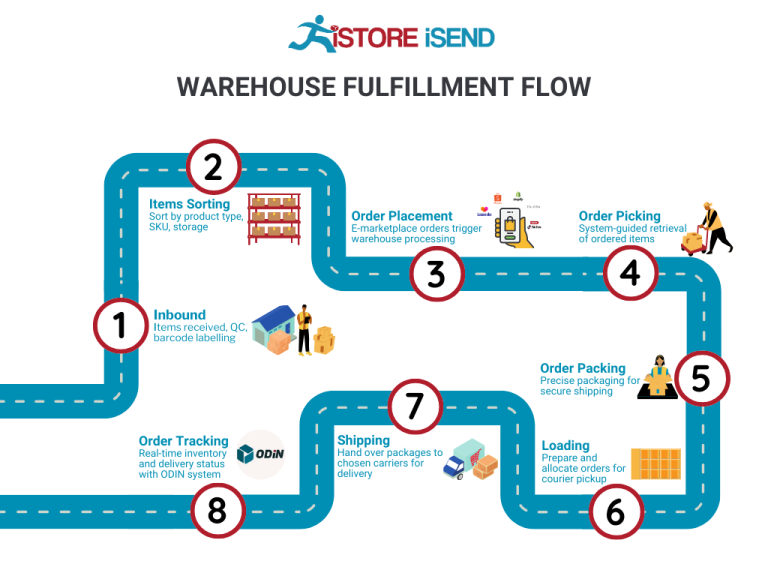
5. Scalable Operations
FBA is designed to grow with your business. As sales increase, Amazon’s fulfillment capabilities can easily accommodate higher volumes without requiring sellers to invest in additional warehousing or logistics infrastructure.
Cons of Amazon FBA
1. High Fees
While FBA provides numerous benefits, it also comes with significant costs. Sellers must pay storage fees for their inventory and fulfillment fees for each item sold. These costs can add up, particularly for low-margin products, eating into overall profitability.
2. Strict Inventory Rules
Amazon has stringent inventory management policies that sellers must adhere to. These include guidelines for inventory limits, storage duration, and product preparation. Failure to comply with these rules can result in penalties or account suspension, making it crucial for sellers to stay informed and organized.
3. Commingling Risks
FBA operates on a commingling model, which means that sellers’ products are stored alongside those of other sellers. This can lead to risks, such as receiving returns of products that are not yours or having issues with counterfeit goods. Sellers must be vigilant in managing their inventory and ensuring their products are distinguishable.
4. Loss of Control
When using FBA, sellers relinquish a degree of control over the fulfillment process. This includes packaging, branding, and customer interactions. For businesses that prioritize unique unboxing experiences or direct customer relationships, this loss of control can be a disadvantage.
5. Complex Fee Structure
Understanding Amazon’s fee structure can be daunting. Different types of fees apply depending on the product category, size, and weight. Sellers need to carefully analyze these fees to ensure they are pricing their products appropriately.
Who is FBA Best For?
FBA is particularly well-suited for:
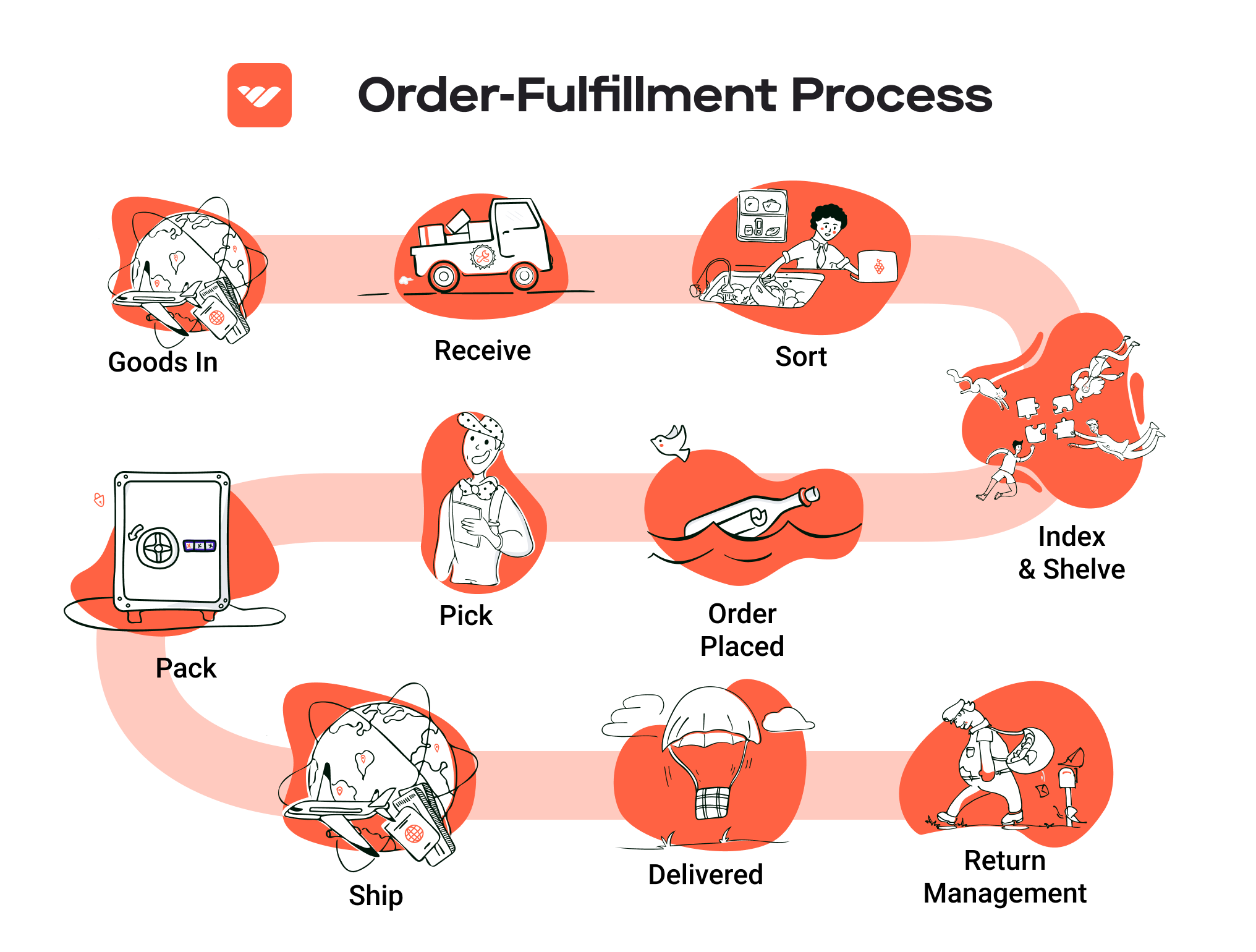
- Small to Medium-Sized Businesses: Companies looking to scale quickly without investing heavily in logistics infrastructure can benefit from FBA’s streamlined processes.
- E-commerce Entrepreneurs: New sellers seeking to establish credibility and visibility in a competitive market can leverage Amazon’s platform and customer trust.
- Sellers with High Sales Volumes: Businesses that have products with high sales volume can offset the fees associated with FBA, making it a more cost-effective solution.
- Brands Expanding Online: Established brands looking to expand their online presence can use FBA to reach a broader audience without the logistical headaches.
In conclusion, Fulfillment by Amazon offers a powerful solution for e-commerce businesses aiming to scale operations and reach new customers. However, it’s essential to weigh the pros and cons carefully and determine if the service aligns with your business model and goals. Understanding the nuances of FBA can help sellers make informed decisions that drive growth while managing costs effectively.
Core Services Offered by Fulfillment Centers
Inventory Management & Warehousing
Inventory management and warehousing form the backbone of any successful e-commerce fulfillment operation. Fulfillment centers provide businesses with secure storage solutions for their products, which is essential for maintaining a smooth supply chain. These centers typically offer scalable warehousing options, allowing businesses to store varying quantities of inventory without incurring heavy long-term costs.
One of the key benefits of utilizing a fulfillment center for inventory management is real-time tracking. Advanced inventory management systems enable e-commerce businesses to monitor stock levels, forecast inventory needs, and receive alerts for low stock. This proactive approach helps prevent stockouts or overstock situations, both of which can adversely affect sales and customer satisfaction.
Moreover, the centralized location of fulfillment centers allows for quicker shipping times and reduced shipping costs. By strategically positioning inventory near major shipping routes or customer bases, fulfillment centers can enhance delivery speed, an increasingly critical factor in consumer purchasing decisions. In essence, efficient inventory management and warehousing streamline operations, allowing businesses to focus on growth and customer engagement rather than logistics.
Pick and Pack Services
Pick and pack services are crucial for the order fulfillment process. This service involves selecting (or “picking”) the right products from the warehouse and then packing them securely for shipment. Fulfillment centers employ trained staff who are skilled in ensuring that orders are filled accurately and efficiently.
The primary benefit of effective pick and pack services is the significant reduction in order fulfillment time. Quick and accurate processing not only enhances customer satisfaction but also fosters repeat business. Customers expect prompt delivery, and any delays can lead to dissatisfaction and potential loss of future sales.
Additionally, fulfillment centers often utilize technology to streamline the pick and pack process. This may include barcode scanning, automated inventory systems, and optimized picking routes within the warehouse. Such technologies minimize errors and improve operational efficiency. By entrusting this process to a fulfillment center, e-commerce businesses can maintain high standards of order accuracy while freeing up internal resources to focus on strategic initiatives like marketing and product development.
Kitting and Assembly
Kitting and assembly services involve combining multiple items into a single package or product. This could be as simple as bundling related products together or as complex as assembling components into a finished product. Fulfillment centers offer these services to help businesses present their products in a more attractive and marketable way.
The benefits of kitting and assembly are manifold. For one, it allows businesses to create unique product offerings that can enhance customer experience. Bundled products often attract more attention and can be sold at a higher price point, increasing overall revenue. Furthermore, kitting can lead to streamlined shipping processes, as multiple items can be shipped together, reducing packaging waste and shipping costs.
Kitting also provides businesses with an opportunity to engage in seasonal promotions or special offers. For example, a company could create a holiday gift box that combines several best-selling items. This flexibility allows businesses to respond quickly to market trends and consumer demands, giving them a competitive edge in a crowded e-commerce landscape.
Returns Management (Reverse Logistics)
Returns management, also known as reverse logistics, is an essential service offered by fulfillment centers. This involves handling product returns from customers efficiently and effectively. A well-managed returns process can significantly influence customer satisfaction and brand loyalty.
The primary benefit of a robust returns management system is that it simplifies the often complex and tedious process of handling returns. Fulfillment centers typically provide a streamlined system for processing returns, including inspection, restocking, and inventory updates. This ensures that businesses maintain accurate stock levels and can quickly resell returned items.
Moreover, an efficient returns management system can enhance customer trust. When customers know that they can easily return products, they are more likely to make purchases, reducing the barrier to buying. Fulfillment centers may also offer customizable return policies, allowing businesses to tailor the process to their specific customer base. This adaptability can improve overall customer experience and drive repeat business.
In conclusion, partnering with a fulfillment center can significantly enhance the operational capabilities of an e-commerce business. By leveraging services such as inventory management, pick and pack, kitting, and returns management, businesses can improve efficiency, reduce costs, and ultimately create a better experience for their customers. As e-commerce continues to grow, these core fulfillment services will remain critical for businesses looking to scale and thrive in a competitive marketplace.
How to Choose a Fulfillment Partner: A 6-Point Checklist
Location & Warehouse Network
Why It Matters:
The geographical location of your fulfillment partner’s warehouses is crucial for reducing shipping times and costs. A partner with multiple warehouses strategically located across key regions can facilitate faster deliveries to your customers, which is vital for maintaining high satisfaction rates.
Questions to Ask:
– Where are your warehouses located, and do you have multiple locations?
– How do you determine which warehouse will fulfill an order?
– Can you accommodate international shipping, and if so, what locations do you service?
– What is your average shipping time to major markets?
Technology & Integrations
Why It Matters:
In today’s e-commerce landscape, seamless technology integration is essential. Your fulfillment partner should offer a robust technology platform that allows for real-time inventory tracking, order processing, and easy integration with your existing e-commerce systems. This ensures that you can efficiently manage your operations and maintain visibility over your supply chain.
Questions to Ask:
– What software do you use for inventory management, and how does it integrate with popular e-commerce platforms?
– Can you provide real-time tracking for orders and inventory levels?
– Are there any additional costs associated with integrations or tech support?
– How often do you update your technology, and what features can we expect in the near future?
Specializations (e.g., Cold Storage, Oversized Items)
Why It Matters:
If your products have specific storage or handling requirements—such as temperature control for perishables or special care for oversized items—it’s vital to choose a fulfillment partner that specializes in these areas. A partner with relevant expertise can help ensure that your products are stored and shipped in a manner that meets regulatory standards and customer expectations.
Questions to Ask:
– Do you have experience handling my specific product types?
– What specialized equipment or facilities do you have for products that require temperature control or special handling?
– Can you accommodate unique packaging requirements for my products?
– What processes do you have in place to ensure product integrity during storage and shipping?
Scalability & Capacity
Why It Matters:
As your business grows, your fulfillment needs will evolve. Choosing a partner that can scale with you is essential for long-term success. Assessing their capacity to handle increased order volumes and additional services is crucial for ensuring that your operations can expand without disruption.
Questions to Ask:
– How do you manage seasonal spikes in order volume?
– What is your maximum storage capacity, and how do you handle overflow?
– Can you easily add additional services (like kitting or assembly) as my business grows?
– What steps do you take to ensure that you can meet my fulfillment needs as my business scales?
Pricing and Contracts
Why It Matters:
Understanding the pricing structure and contract terms is vital to avoid hidden fees that could cut into your profit margins. A transparent pricing model helps you budget effectively and ensures that you only pay for the services you need.
Questions to Ask:
– Can you provide a detailed breakdown of your pricing structure?
– Are there any hidden fees (setup fees, storage fees, shipping fees) that I should be aware of?
– What are your contract terms, and do you offer flexibility if my needs change?
– How do you handle pricing adjustments in case of fluctuations in shipping rates or service costs?
Customer Support & Reviews
Why It Matters:
Reliable customer support can be a game-changer in fulfillment operations. A partner that provides excellent customer service can help quickly resolve issues, answer questions, and ensure that your fulfillment processes run smoothly. Additionally, checking reviews from other clients can provide insight into their reliability and performance.
Questions to Ask:
– What type of customer support do you offer (e.g., dedicated account manager, 24/7 support)?
– How quickly can I expect responses to inquiries or issues?
– Can you share testimonials or case studies from clients similar to my business?
– What is your process for addressing and resolving fulfillment errors or customer complaints?
Conclusion
Choosing the right fulfillment partner is a critical decision that can impact your e-commerce operations and customer satisfaction. By using this checklist, you can ensure that you select a partner that not only meets your current needs but is also capable of growing with your business. Taking the time to ask the right questions will help you find a fulfillment provider that aligns with your operational goals and enhances your overall business success.
Understanding Fulfillment Pricing: A Breakdown of Common Fees
Initial Setup Fees
Initial setup fees are one-time charges that cover the costs associated with onboarding your business to a fulfillment service. These fees may include the configuration of your account, integration with your e-commerce platform, and any necessary customizations to meet your specific needs.
Typically, these fees can vary widely depending on the complexity of your requirements. For example, a straightforward setup for a small business might incur minimal costs, while a larger operation with multiple product lines or specialized services (like kitting or custom packaging) may face higher fees. Some fulfillment providers, like eFulfillment Service, offer no setup fees, making them an attractive option for startups and small businesses looking to minimize initial costs.
Receiving Fees
Receiving fees are charged when your inventory arrives at the fulfillment center. This fee covers the labor required to unload, inspect, and store your products in the warehouse.
The calculation for receiving fees usually depends on the volume of goods being received and the complexity of the process. For instance, a standard rate per pallet or per hour of labor may apply. Some fulfillment centers may also charge extra for handling specialized products or those requiring special care. Understanding this fee structure is crucial, as it can impact your overall logistics costs, especially if you frequently replenish inventory.
Storage Fees (per pallet/bin)
Storage fees are ongoing charges for keeping your inventory in the fulfillment center. These fees can be calculated on a per-pallet or per-bin basis, depending on how your products are organized and the storage space they occupy.
Typically, storage fees are assessed monthly and can vary based on the size of the items and the duration of storage. Many fulfillment centers offer tiered pricing, meaning that the more pallets or bins you store, the lower the per-unit cost may be. Additionally, be aware of any long-term storage fees that may kick in if your inventory remains unsold for an extended period, as these can significantly affect your bottom line.
Pick & Pack Fees (per item/order)
Pick and pack fees are charges associated with the process of selecting items from your inventory and preparing them for shipment. This fee structure is usually calculated on a per-item or per-order basis, depending on how the fulfillment provider structures their pricing.
For example, a fulfillment center might charge a fixed fee for each order processed, plus an additional fee for each item picked. This model incentivizes efficient order processing and can help businesses manage costs as they scale. If you expect to have a high volume of orders, it’s essential to negotiate favorable pick and pack rates to ensure your logistics remain cost-effective.
Shipping Fees
Shipping fees are often the most variable part of fulfillment pricing, influenced by factors like package weight, dimensions, destination, and shipping speed. Most fulfillment centers partner with multiple carriers, allowing them to offer competitive shipping rates based on the best available options for your needs.
These fees can be calculated as flat rates or based on actual shipping costs, which may include surcharges for residential delivery, Saturday delivery, or international shipping. Understanding the shipping fee structure is critical, as it can have a substantial impact on your overall fulfillment costs and customer satisfaction. Utilizing a fulfillment provider with a robust shipping network can help you optimize these costs and improve delivery times.
Conclusion: Tips for Getting an Accurate Quote
When seeking fulfillment services, obtaining an accurate quote is essential for understanding your potential costs. Here are some practical tips:
-
Be Clear About Your Needs: Provide detailed information about your product range, order volume, and any special requirements (e.g., kitting, custom packaging).
-
Ask for Itemized Quotes: Request breakdowns of all potential fees, including initial setup, receiving, storage, pick and pack, and shipping, to understand the full cost structure.
-
Inquire About Discounts: Some fulfillment centers offer discounts for higher volumes or long-term contracts. It’s worth asking about these options to potentially reduce costs.
-
Consider Hidden Fees: Ensure the quote includes all potential fees to avoid surprises later. Clarify any terms regarding long-term storage or additional service charges.
-
Compare Multiple Providers: Don’t settle for the first quote you receive. Comparing several providers can help you find the best value for your specific business needs.
By understanding these common fulfillment pricing models and following these tips, you can make informed decisions that align with your business goals while optimizing your logistics costs.
Frequently Asked Questions (FAQs) about Fulfillment
1. What is order fulfillment in e-commerce?
Order fulfillment in e-commerce refers to the complete process of receiving, processing, and delivering customer orders. This includes inventory management, picking and packing items, shipping, and handling returns. Efficient order fulfillment is crucial for customer satisfaction and overall business success.
2. What’s the difference between a warehouse and a fulfillment center?
A warehouse is primarily used for storing goods until they are needed, focusing on inventory management. In contrast, a fulfillment center is designed specifically for e-commerce and handles the entire order processing chain, including picking, packing, and shipping directly to customers. Fulfillment centers often employ advanced technology to optimize these processes.
3. What is a 3PL (Third-Party Logistics)?
A 3PL (Third-Party Logistics) provider is a company that offers outsourced logistics services, including warehousing, order fulfillment, and shipping. By partnering with a 3PL, businesses can scale their operations without investing in their own logistics infrastructure, allowing them to focus on core business activities like marketing and product development.
4. How much do fulfillment services cost?
Fulfillment service costs can vary widely based on several factors, including order volume, types of products, and specific services required. Generally, costs may include storage fees, pick and pack fees, shipping fees, and additional service fees (like returns processing). It’s essential to request quotes from multiple providers to compare pricing structures effectively.
5. How do I choose the right fulfillment partner?
When choosing a fulfillment partner, consider factors such as their experience in your industry, the range of services offered, technology integration capabilities, customer service quality, and pricing. It’s advisable to read reviews, ask for references, and ensure they can scale with your business as your order volume increases.
6. How can I track my inventory levels?
Most modern fulfillment services provide real-time inventory management systems that integrate with your e-commerce platform. These systems allow you to monitor stock levels, receive alerts for low inventory, and forecast inventory needs. This helps maintain optimal stock levels and prevents stockouts or overstock situations.
7. What is pick and pack in fulfillment?
Pick and pack is a process where items are selected (picked) from inventory based on customer orders and then packed into boxes for shipping. This process is critical for ensuring that the correct products are sent to customers efficiently. High accuracy rates in pick and pack operations are essential for customer satisfaction.
8. How do fulfillment services handle returns?
Fulfillment services typically offer returns processing as part of their operations. This includes receiving returned items, inspecting their condition, restocking them if applicable, and updating inventory records. A streamlined returns process is vital for maintaining customer trust and satisfaction.
9. Can I integrate my e-commerce platform with fulfillment services?
Yes, many fulfillment providers offer integration with popular e-commerce platforms and marketplaces. This allows for seamless communication between your online store and the fulfillment center, automating order processing, inventory updates, and shipping notifications, ultimately enhancing operational efficiency.
10. What are the benefits of using a fulfillment service?
Using a fulfillment service can provide numerous benefits, including reduced shipping costs through bulk shipping rates, improved order accuracy, faster delivery times, and the ability to scale operations without the need for significant investment in logistics infrastructure. Additionally, it frees up time for business owners to focus on growth and customer engagement.
Conclusion: Is Outsourcing Fulfillment the Right Move for Your Business?
Evaluating the Benefits of Outsourcing Fulfillment
Outsourcing your fulfillment operations can be a transformative decision for your e-commerce business, offering several compelling advantages. First and foremost, utilizing a fulfillment service allows you to save valuable time. By delegating logistics, inventory management, and shipping to experts, you can redirect your focus toward core business activities such as product development, marketing, and customer engagement. This shift not only enhances productivity but also fosters innovation.
Scalability is another critical benefit of partnering with a fulfillment service. As your business grows, your logistics needs will evolve. A reliable fulfillment partner can effortlessly adapt to fluctuating order volumes, ensuring that you are equipped to meet customer demands without the constraints of managing warehousing and staffing on your own. This flexibility is essential for businesses aiming to expand into new markets or handle seasonal spikes in demand.
Moreover, leveraging the expertise of a fulfillment provider means accessing advanced logistics technology and best practices that may be beyond your current capabilities. With their established shipping networks and industry knowledge, these partners can optimize shipping costs, improve delivery times, and enhance the overall customer experience.
However, the key to maximizing these benefits lies in selecting the right fulfillment partner. Not all providers are created equal; it’s crucial to evaluate their track record, customer service capabilities, and technology integrations to ensure they align with your business goals.
Take Action
To determine whether outsourcing fulfillment is the right move for your business, consider conducting a thorough audit of your current shipping processes. Assess your order volume, shipping costs, and customer satisfaction levels. This analysis will provide valuable insights into whether a fulfillment partner could enhance your operations and support your growth strategy. If you find inefficiencies or constraints, it may be time to explore the benefits of a dedicated fulfillment service. Your future growth depends on the strategic decisions you make today.
Important Disclaimer
⚠️ Important Disclaimer
The information in this guide is for educational purposes. Fulfillment services, pricing, and platform features change frequently. Always conduct your own due diligence and consult with providers directly before making business decisions.
